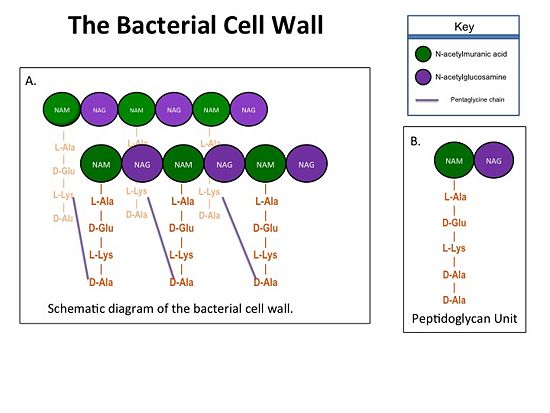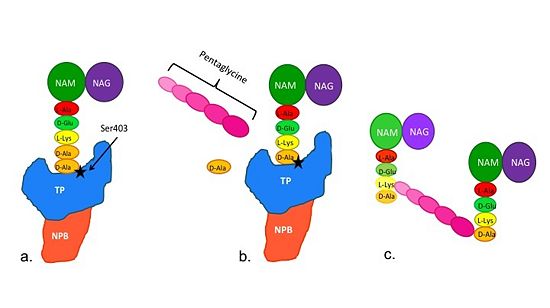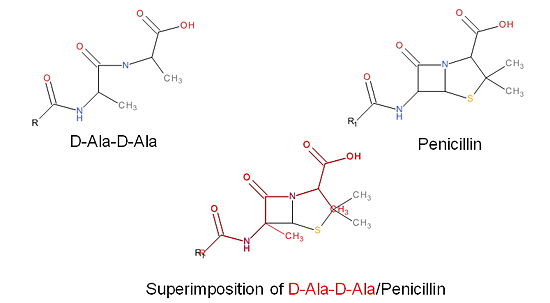Sandbox 127
From Proteopedia
(Difference between revisions)
| Line 1: | Line 1: | ||
<StructureSection load= size=475 side='right' scene='36/365380/4dki_cartoon/22'> | <StructureSection load= size=475 side='right' scene='36/365380/4dki_cartoon/22'> | ||
| - | + | Peptidoglycan transpeptidase (TP), also known as penicillin-binding proteins (PBP), catalyze the cross-linking of peptidoglycan polymers during bacterial cell wall synthesis. Beta-lactam (β-lactam) antibiotics, which include penicillins, cephalosporins and carbapenems, bind and irreversibly inhibit transpeptidases. The overuse and misuse of β-lactam antibiotics has led to strains of Staphylococcus aureus that are resistant to all β-lactams and are often only susceptible to “last resort antibiotics”, such as vancomycin. | |
| - | include penicillins, cephalosporins and carbapenems, bind and irreversibly inhibit transpeptidases. The overuse and misuse of β-lactam antibiotics has led to strains of Staphylococcus aureus that are resistant to all β-lactams and are often only susceptible to “last resort antibiotics”, such as vancomycin. | + | |
== Cell Wall Structure == | == Cell Wall Structure == | ||
| - | The cell wall, which is composed of peptidoglycan, is crucial for maintaining the structural integrity of the bacterium. | + | The cell wall, which is composed of peptidoglycan, is crucial for maintaining the structural integrity of the bacterium. Peptidoglycan consists of N-acetylmuramic Acid (NAM) and N-acetylglucosamine (NAG) polymers. Rows of peptidoglycan are cross-linked together with pentaglycine chains. The NAM residues have a five amino acid side chain that terminates with two D-Alanine (D-Ala) residues. |
[[Image:Cell Wall 7 30 2013.jpg|thumb|alt= Alt text| Figure 1. A.Bacterial Cell Wall B.Peptidoglycan with D-Ala-D-Ala substrate |550px]] | [[Image:Cell Wall 7 30 2013.jpg|thumb|alt= Alt text| Figure 1. A.Bacterial Cell Wall B.Peptidoglycan with D-Ala-D-Ala substrate |550px]] | ||
Revision as of 18:45, 15 August 2013
| |||||||||||



